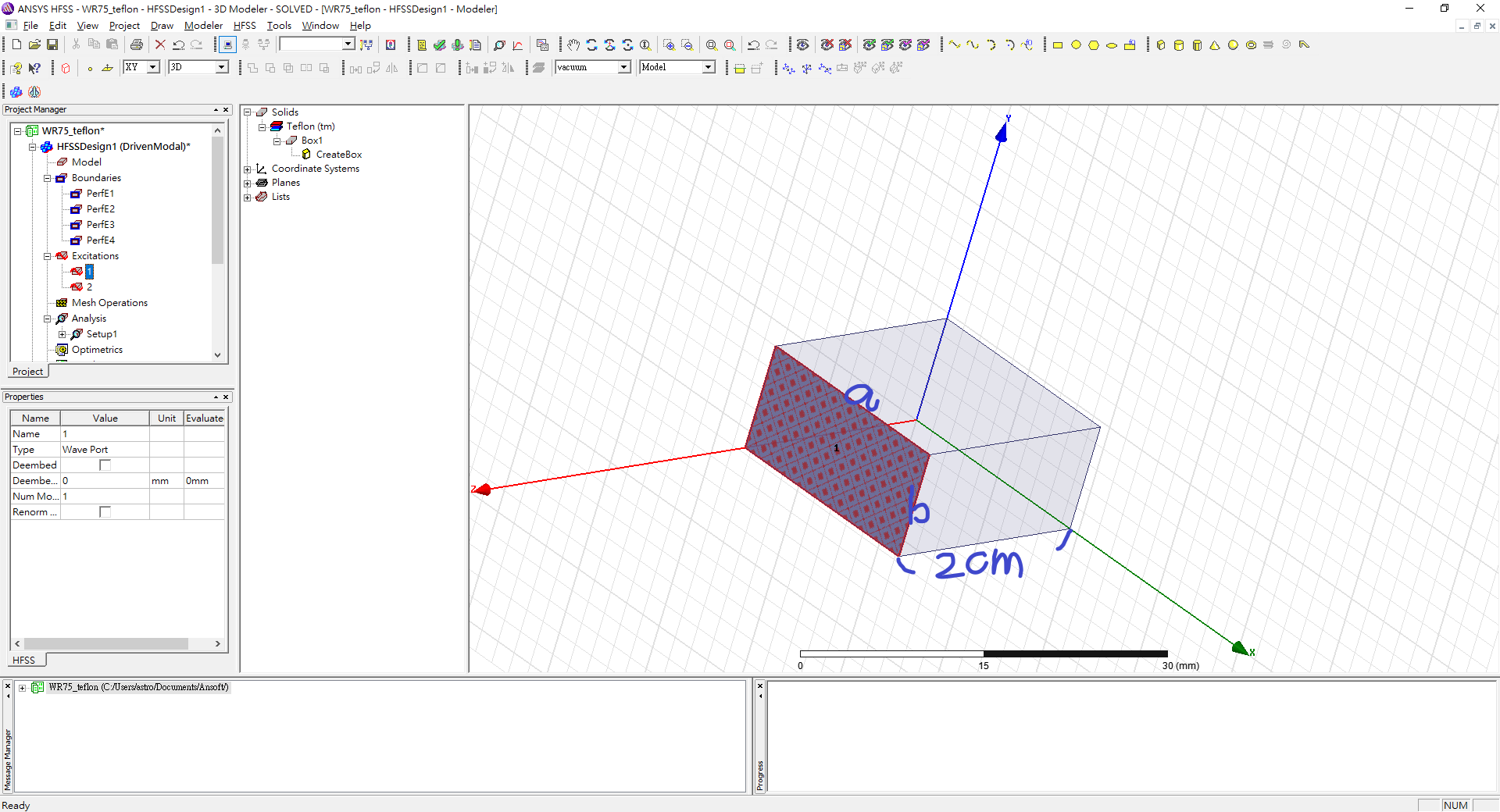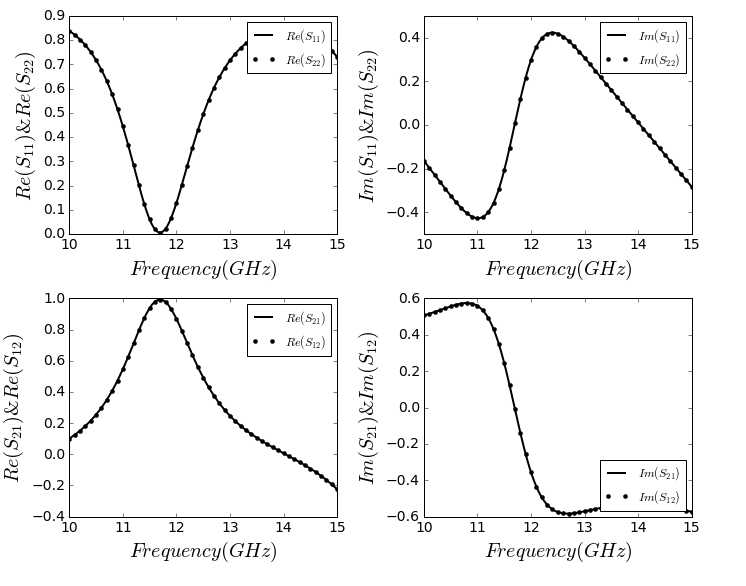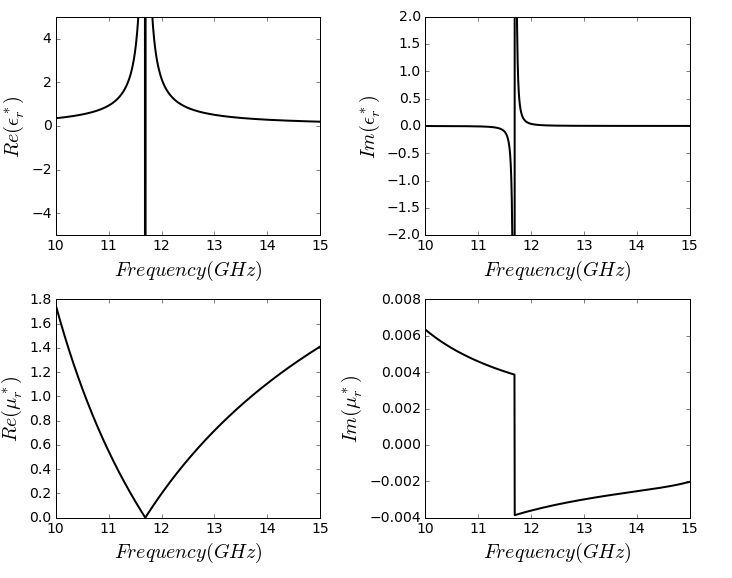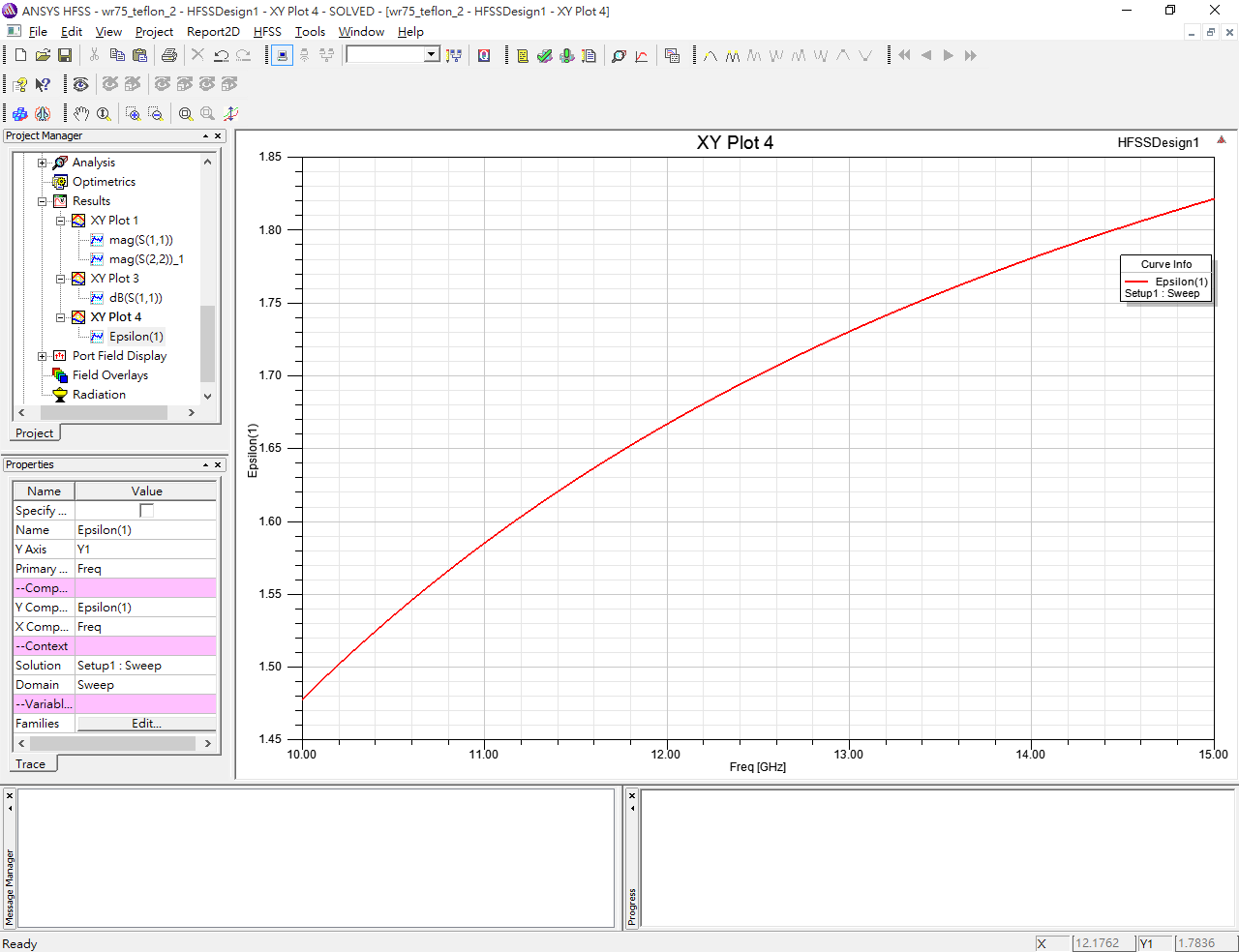Measuring Teflon permittivity by waveguide WR75
I want to simulate S-parameters for measuring Teflon by T/R method, and choose rectangular waveguide WR75 for measurement.
Then using NRW method to obtain permittivity and permeability from simulating S-parameters.
First assume TE10 is dominant mode, cutoff frequency is 7.87GHz and cutoff wavelength is 0.0381m.
I created a box of Teflon(a = 19.05mm, b = 9.525mm, L = 20mm) in HFss below:

In figure Port1 is shown, the opposite face is set as port2, other faces are set as Perfect E boundrary.
Other setting In HFSS:
Solutin Type:
Modal, Network Analysis
In wave Port:
Number of modes : 1
Integrationline : None
Analysis Setup:
Solution Frequenct : 18GHz
Frequency Sweep:
Start : 10GHz
Stop : 15GHz
Step Size : 5MHz
Swep Type : Discrete
Then exported S-parameters(normalized to 50 ohms) from HFSS, the S-parameters from data is shown below:

And use NRW method(cutoff wavelength is 0.0381mm), the result:

Apparently, the result is not correct, relative permittivity for Teflon is 2.1, relative permeability is 1.
I'm not sure which part was wrong.
Hope someone could help me!
Thanks!
I simulated WR75 (a = 19.05mm, b = 9.525mm), which filled with Teflon, the length is 30mm.

The pink faces are port1 and port2 respectively.
Solutin Type:
Modal, Network Analysis
In wave Port port1 and port2:
Number of modes : 1
Integrationline : None
Analysis Setup:
Solution Frequenct : 12GHz
After running, I see Epsilon(1) result

The result shows that epsilon is not 2.1, why?
Is it related to impedance?
Thanks!
You're close to cutoff. The "Epsilon" property is the effective permittivity of the mode.
Since you're still relatively well in the superluminal dispersion region, the effective permittivity is less than the non-dispersive regions of the mode.
Hi!
So how to modify it that can measure permittivity of Teflon?
Two methods I can think of:
#1: Take into account the dispersion of the waveguide. You should be able to extract the correct value still, but the math will be more complicated.
#2: Measure in a non-dispersive frequency range (above 15 GHz). Notice how your Epsilon curve is asymptotically approaching 2.1 -- you want this to be sufficiently flat.
